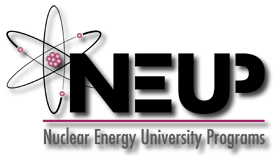
Four Georgia Tech research teams were recently awarded more than $6.6 million in combined research and development grants from the U.S. Department of Energy (DOE) to advance nuclear technology innovations and infrastructure. The grants are part of the DOE’s Nuclear Energy University Program (NEUP) and ongoing efforts to expand clean energy innovation. The Through NEUP, the DOE supports a limited number of projects each year to accelerate innovation and improve nuclear reactor efficiency, find better ways to recycle and/or dispose of spent nuclear fuel, and design reactors that produce more energy and less waste. Georgia Tech is one of only 30 universities nationwide selected to receive funding under this program in 2014. The Georgia Tech-led projects are focused on reducing waste and improving the cost and efficiency of nuclear power generation.
“These grants are reflective of the caliber of Georgia Tech’s nuclear research,” said Strategic Energy Institute Executive Director Tim Lieuwen. “Our researchers are making significant contributions toward the development of safer, more efficient, and cost-effective nuclear power options to meet our future energy needs.”
The DOE awarded a total of $30 Million for 47 nuclear energy research and development projects. Georgia Tech was awarded 3 awards for fuel cycle technologies and reactor concepts research.
Sankar Nair, of the School of Chemical & Biomolecular Engineering, was among the winning fuel cycle technology awards. His project titled, “Zeolite Membranes for Krypton/Xenon Separation form Spent Nuclear Reprocessing Off-Gas,” aims to develop more efficient and robust methods to capture and purify Krypton and Xenon from the nuclear fuel cycle. Krypton and Xenon are released as off-gases when spent nuclear fuel is reprocessed. Krypton is radioactive and must be stored as waste for many years. Separating Krypton from the much larger amount of non-radioactive Xenon present in the off-gas not only reduces the volume of waste for storage, but enables the high-value Xenon gas to be recycled. Xenon is used in a variety of commercial applications including lighting, anesthesia, and medical imaging. Conventional methods for separating these gases involve distillation at cryogenic temperatures, which is both costly and energy-intensive. Because the two noble gases are chemically inert, it is difficult to find high-performance materials that are also radiation-resistant to capture them. Nair’s project will develop porous inorganic zeolite membranes for this purpose. Ramesh Bhave and Barry Spencer at Oak Ridge National Laboratory are co-collaborators on the project and will be evaluating the radiation-resistance of the membranes under realistic conditions.
Sotira Yiacoumi and Costas Tsouris in the School of Civil and Environmental Engineering also earned a fuel cycle research and development award for their project,” Optimizing Polymer-Grafted Amidoxime-based Adsorbents for Uranium Uptake from Seawater.” The team aims to improve the selectivity and adsorption capacity of an experimental, advanced polymer material that has shown great promise as an alternative technology for extracting uranium from seawater. The world’s oceans contain an estimated 4.5 billion tons of dissolved uranium, a volume a thousand times greater than what can be mined from land-based resources. The challenge is the concentration of uranium in seawater is very low, making the cost of extraction high. Yiacoumi and Tsouris aim to contribute to a more economically viable alternative for extracting uranium from saltwater by optimizing the uranium adsorption capacity and kinetics of the polymeric material and providing a better understanding of the uranium uptake process through mathematical modeling.
Devesh Ranjan, a researcher in the School of Mechanical Engineering, earned Reactor Concepts Research Development and Demonstration award for his project that aims to develop an economical and efficient supercritical carbon dioxide based power generation. The project, titled, “Fundamental study of key issues related to advanced S-CO2 Brayton Cycle: prototypic HX Development and Cavitation, is focused on high-temperature, supercritical carbon dioxide (S-CO2) Brayton-cycle gas turbines that would typically be used for the majority of thermal and nuclear power generation. The project aims to explore scientific and operational challenges relating to compact heat exchanger systems and turbo-machinery, which are sensitive to temperature and pressure and can significantly affect operating performance.
The Energy Department also awarded $20 million for Integrated Research Projects (IRPs) addressing such high-priority nuclear energy research challenges, as: transient test instrumentation; sensors and delivery devices for dry storage of used nuclear fuel; and, FHD/Vacuum Drying of used nuclear fuel. Farzad Rahnema, from Georgia Tech’s School of Mechanical Engineering, is the principal investigator for one of the five university-led research teams selected. Rahnema’s project titled, Integrated Approach to Fluoride High Temperature Reactor (FHR) Technology and Licensing Challenges, aims to address critical technology challenges that have been barriers to the development of a commercially viable Fluoride High Temperature Reactor (FHR). Fluoride salt-cooled high-temperature reactors (FHRs) are an emerging reactor class that has the potential to economically and reliably produce large quantities of electricity and high-temperature industrial process heat while maintaining full passive safety.
Utilizing an integrated approach, the project focuses on solving several key inter-related technology gaps. These include challenges surrounding: tritium management, liquid salt coolant impurity removal and redox and corrosion control, advanced instrumentation under extreme conditions, qualification of alloys for structural applications, the design, fabrication, testing, demonstration, and modeling of novel heat exchangers, and verification and validation of neutronics and thermal hydraulics modeling and simulation tools in support of licensing.